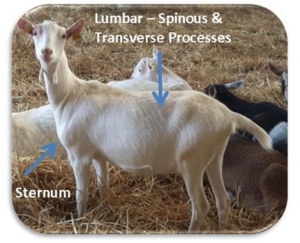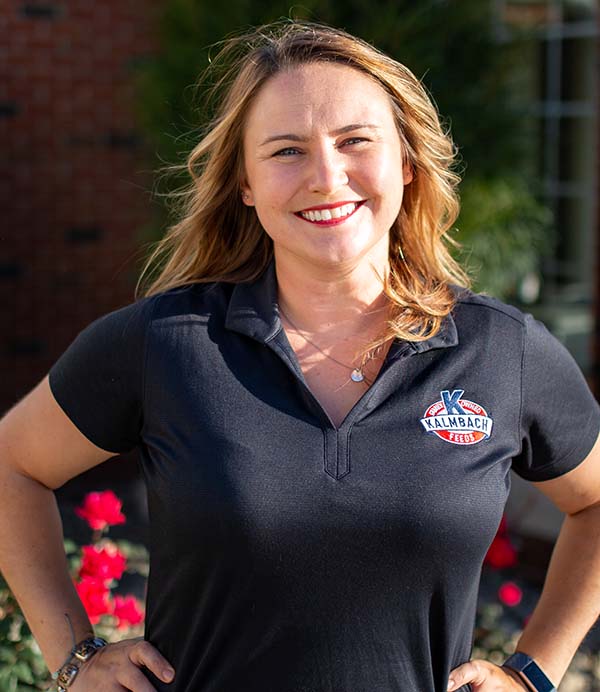Understanding How to Evaluate Body Condition in Your Goat Herd

Learning and understanding how to evaluate your goats’ body condition is one of the most important tools a herds(wo)man can have in their toolkit. Poor body condition can clue you in on overall herd health and potential underlying illnesses. It can also reveal heavy parasite burden and significant nutritional deficiencies. By maintaining an adequate Body Condition Score, you can also maximize your returns in milk and meat production, optimize the conception rates in your brood stock, and help ensure that you have healthy kids on the ground.
What is a Body Condition Score (BCS)?
Body Condition Scoring can be implemented to evaluate the body reserves that your goats have based on a numeric scale. There are typically three areas to evaluate when determining body condition – the spinous process, the ribcage, and the sternum. Most Body Condition Score (BCS) scales range from 1.0 – 5.0 and are scored in increments of 0.5. A goat with a BCS of 1.0 is extremely thin with little to no fat reserves. A goat with a BCS of 5.0 is obese and over-conditioned.
| Body Condition Score Scale | |
| 1 | Very Thin / Emaciated |
| 2 | Thin |
| 3 | Good Condition |
| 4 | Fat |
| 5 | Very Fat / Obese |
Low BCS and dull hair coat can be a sign of parasites, coccidiosis, and disease, but can also be indicative of an inadequate feeding program where nutritional requirements are not being met. Due to their growth requirements, most young goats will not easily reach a BCS over 4.0. Mature goats, Pygmy and Dwarf breeds being kept at maintenance are more likely to become obese as their nutrient requirements are plateaued and over-feeding is easy to do. Breeding stock should be kept at a BCS close to 3.0. Breeding does that are too thin can experience inadequate milk production and poor conception. Fat breeding does can also experience poor conception, pregnancy toxemia, and kidding difficulty. Bucks that are too fat or too thin may also have a difficult time breeding and experience low conception rates.
How Do I Score My Goats?
Scoring can be done quickly by visually inspecting your goats and evaluating their appearance. However, the only accurate way to score your herd is to visually inspect, palpate their ribcage and lumbar vertebrae, and pinch the fat covering on the sternum. The sternum, which is also known as the breastbone, can be found at the base of your goat’s chest. The lumbar vertebrae are located along your goat’s back, in between the ribcage and hips. Though dairy goats and meat goats are scored a little bit differently, with dairy breeds inherently being leaner, the idea is the same for both.

http://www.omafra.gov.on.ca/english/livestock/goat/news/dgg1708a5.htm
BCS 1
The goat is visually emaciated. The backbone is extremely prominent and there is a deep indentation along either side of the spine in the lumbar region. Ribs are visible with little to no fat cover. There is no fat on the sternum.
BCS 2
The goat’s backbone is visible with an indentation along either side of the spine, but the spine itself feels smooth. Ribs are still visible, but the space in between each individual rib isn’t sunken in. Sternal fat is easy to pinch and move around.
BCS 3
The spine is only slightly visible and can only be palpated with light pressure. Some ribs are visible, but still easily felt. Sternal fat is present and can be pinched but not easily moved.
BCS 4
The spine and ribs cannot be seen and are only felt using pressure. An even layer of fat covers the ribs. The fat covering the sternum is difficult to pinch and unmovable.
